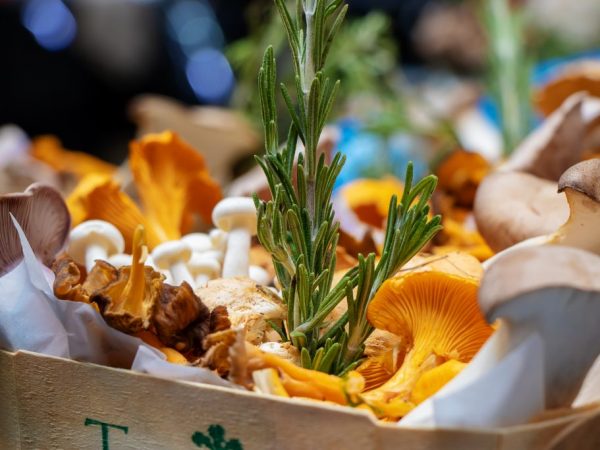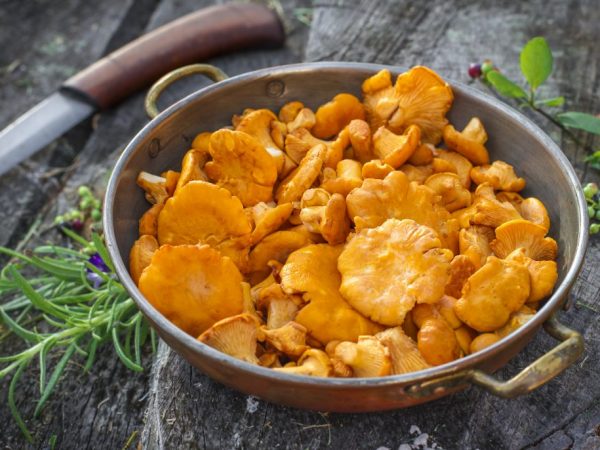What is the calorie content of mushrooms
Mushrooms have long been a food that can replace meat in many recipes. The availability of mushrooms and the variety of recipes with them make them a truly unique and at the same time versatile product. The calorie content of mushrooms is very low, while in terms of the amount of carbohydrates they can be compared with vegetables, and in terms of proteins - with meat.

What is the calorie content of mushrooms
What mushrooms are suitable for a diet
The calorie content of mushrooms is relatively low, so they are often used for dietary nutrition. They perfectly saturate the body, keeping you feeling full for a long time.
Raw porcini mushrooms contain only 34 kcal per 100 g. However, when fried, their nutritional value increases to 162 kcal.
Chanterelles are among the leaders in the lowest calorie content of mushrooms. Even when fried, they carry only 35 kcal.
Some mushrooms can be eaten without heat treatment. For example, such as champignons. The calorie content of mushrooms is 28 kcal per 100 g of raw product.
Eating champignons, you don't have to worry about your figure - there are no fats in their composition.
BJU (ratio of proteins / fats / carbohydrates) of mushrooms: 4.3 g of proteins and 1 g of carbohydrates per 100 g of product.
Influence of the processing method
Depending on the processing, the calorie level of mushrooms can vary significantly:
- Dried forestry - from 230 to 290 kcal;
- Fried. During the frying process, dried mushrooms can lose a certain amount of energy value, up to 160 kcal;
- Pickled mushrooms have a caloric value of only 10 to 25 kcal.
If you are counting calories in your diet, you should consider these nuances.
Nutritional value of different types

The method of processing affects the calorie content of mushrooms
For those who carefully monitor their figure, you should know the energy value of a particular product. So, the number of kilocalories in mushrooms can have the following indicators, depending on the cooking method:
- White fresh - 35;
- White fried - 160;
- White dried - 280;
- Fresh oyster mushrooms - 40;
- Muer mushrooms - 33;
- Fresh milk mushrooms - 15;
- Fresh chanterelles - 20;
- Fried chanterelles - 35;
- Dried chanterelles - 259;
- Boiled butter - 18;
- Pickled mushrooms - 17;
- Fresh boletus mushrooms - 30;
- Fresh mushrooms - 16;
- Fresh champignons - 28;
- Canned champignons - 12.
Almost all mushrooms go well with vegetables.
Irina Selyutina (Biologist):
Knowing how many calories are in 100 g of fresh mushrooms, you can always make your daily diet both complete and dietary. To do this, you need to remember the following points:
- when stewing and frying, the pulp of the mushrooms is saturated with fats, therefore, in this form, their calorie content exceeds 160 kcal per 100 g;
- pickling is a viable alternative to frying because is a boiling with the addition of salt, seasonings and vinegar;
- the calorie content of fried mushrooms can be reduced by pre-boiling them.
These types of recipes are great for eating well or for those on a strict diet.
However, it is not enough to know just to know separately the calorie content of mushrooms.Dishes prepared with this product may have a completely different energy value. To, for example, find out the nutritional value of potatoes with mushrooms, you can use the table of calorie content of finished products, because all components must be taken into account together. For the calculation, you can apply the addition method, the main thing is to know exactly the energy value of each individual product.
The mushrooms received the status of "forest meat" due to their calorie content and 18 essential amino acids in their composition.
The benefits and harms of mushrooms
Mushrooms are rich in rare protein compounds, amino acids and carbohydrates. In addition, it is a special storehouse of vitamins and minerals. Such a set is perfect for maintaining the normal functioning of the central nervous system, heart and blood vessels. There is also a theory that boletus can slow down the aging process in the human body.
However, while praising the benefits of boiled or raw mushrooms, do not forget that their use can be harmful. In particular, these are:
- Poisoning by poisonous doubles. In order to avoid this, do not buy them from strangers, do not collect them yourself if you are not sure of their edibility.
- Eating a product that was collected in an environmentally polluted place. Mushrooms tend to accumulate decay products of radioactive elements, salts of heavy metals.
- The mushroom cell pens contain chitin, which is safe in small doses. Excessive consumption of mushrooms, however, can lead to problems.
Irina Selyutina (Biologist):
Despite all its benefits, the use of mushrooms also has a number of contraindications:
- Frequent consumption of mushrooms can provoke the development or exacerbation of gastrointestinal diseases (gastritis, ulcers, pancreatitis, liver problems). This is due to the presence of chitin polysaccharide in the cell stacks, which is actually not digested in our body. An excess of it is thus a provocative factor that can lead to both gastritis and more serious problems.
- Porcini mushrooms are a separate dish, because meat and mushroom proteins can "conflict" with each other in the stomach, causing serious problems. Porcini mushrooms are best served with the so-called. slow carbohydrates, in particular with unprocessed rice.
- You can not eat salted and fried mushrooms for people prone to stool disorder.
Mushrooms are useful in any form, however, the highest amount of protein is found in dried food. In addition, do not forget that prolonged heat treatment reduces the risk of poisoning with an inedible product, but, at the same time, it destroys useful substances.


